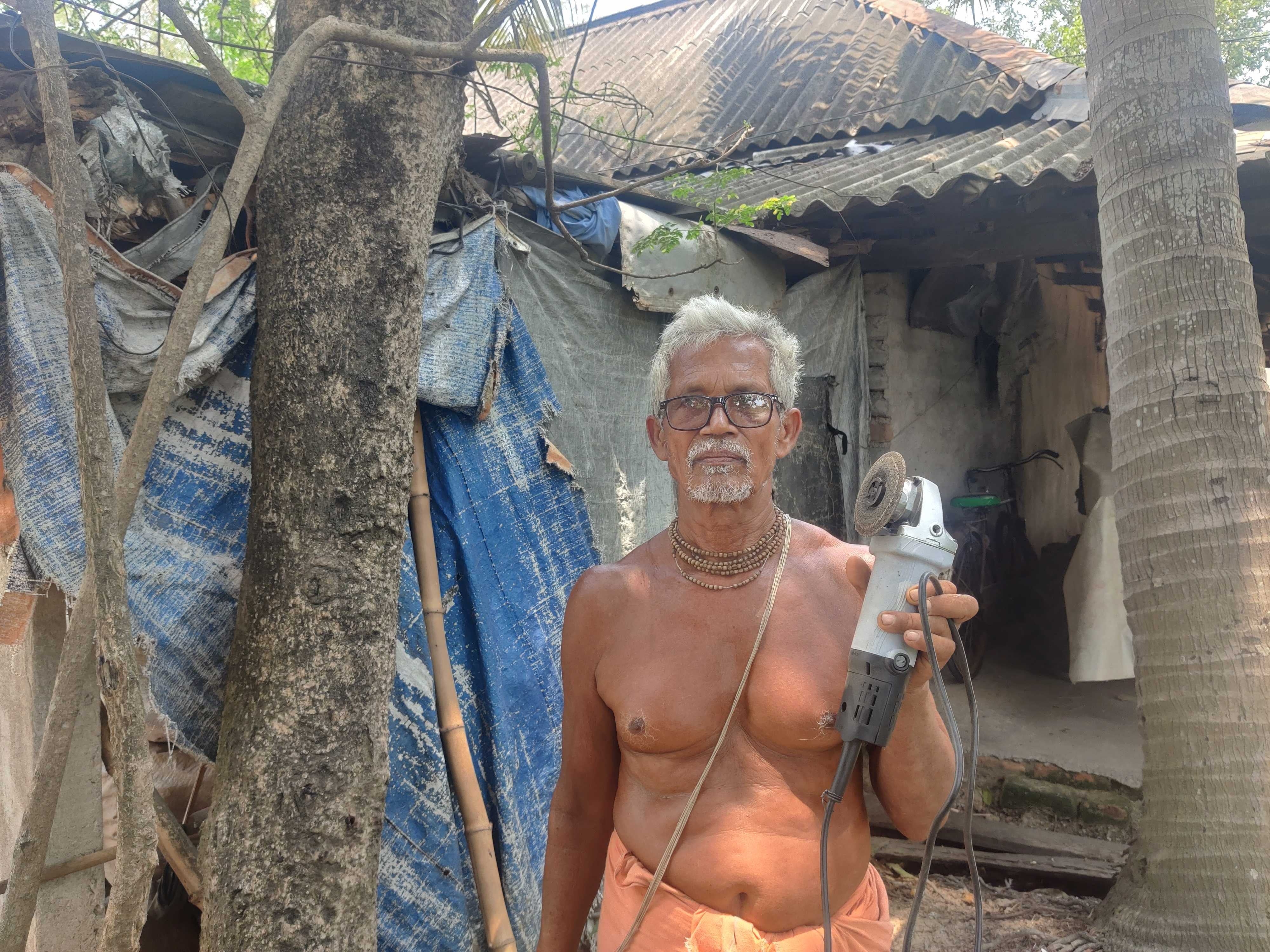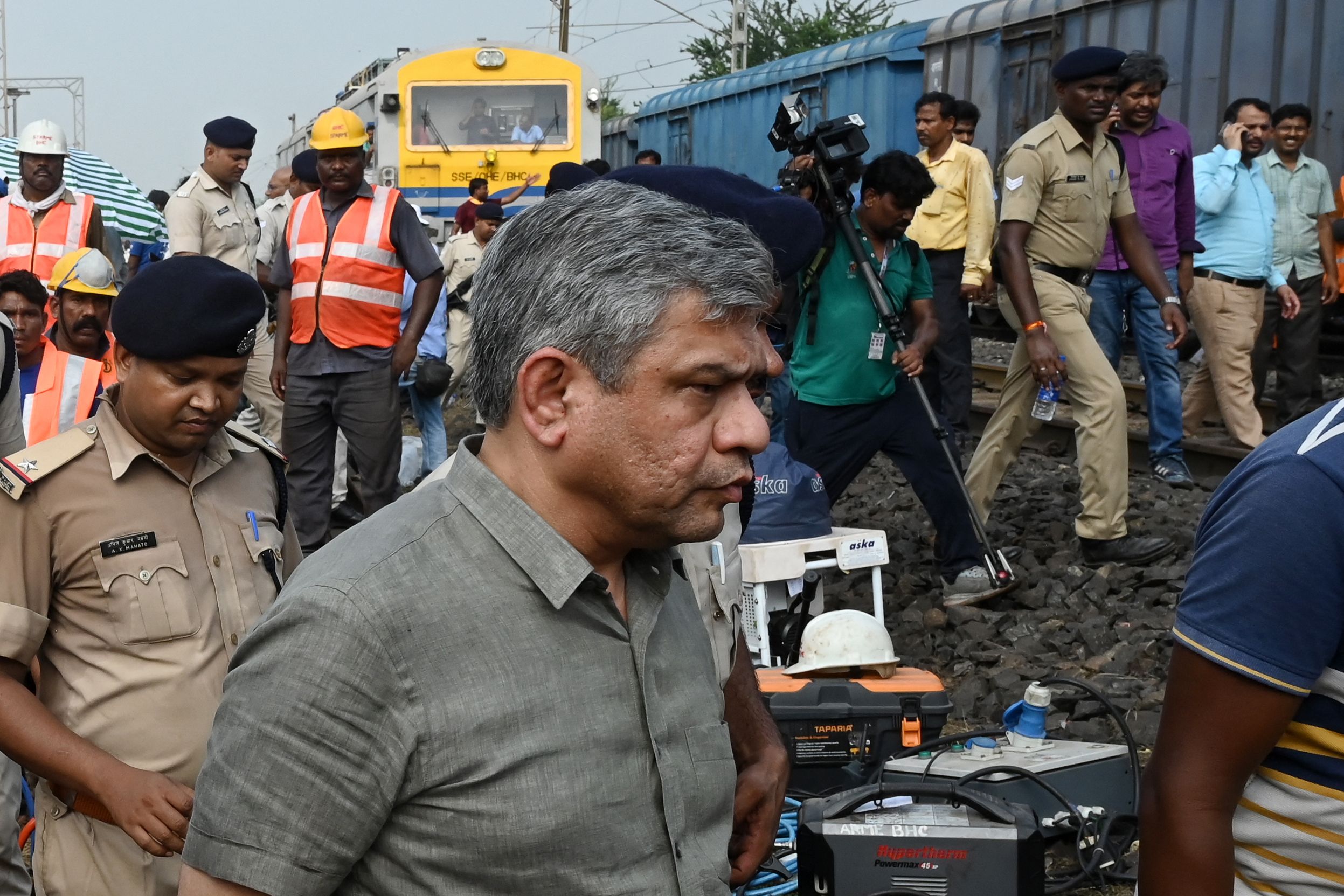Anger grows as 100 bodies from Odisha train crash remain unclaimed: ‘No one is taking responsibility’
Families are growing more and more desperate as the search for their loved ones goes on, as questions mount over whether Friday’s disaster could have been prevented. Alisha Rahaman Sarkar reports from Odisha

It has been more than three days since India witnessed one of the deadliest train crashes in the country’s history, but anguished and increasingly frustrated families are still running between hospitals and makeshift mortuaries in Odisha to try and find their loved ones.
Authorities began a formal investigation on Monday and said the Central Bureau of Investigation (CBI), India’s equivalent of the FBI, will look into whether criminal charges should be brought over the three-train crash that killed at least 275 passengers, though there is mounting concern in Odisha that the actual death toll may prove to be considerably higher.
It’s a reflection of growing distrust in the official response to Friday night’s disaster, with upwards of 100 bodies still unidentified and unclaimed at the All India Institute of Medical Sciences (AIIMS) hospital in Odisha’s capital city Bhubaneswar.
Kalipada Maity from West Bengal has been searching for his brother, who worked as a daily-wage labourer, since Friday. “We have gone to every hospital and mortuary across the state of Odisha. He is nowhere to be found,” Mr Maitey tells The Independent.
“We don’t know what to do. No one is able to help. No one is taking any responsibility. We are roaming with his photos from Bhubaneswar to Balasore,” he says.
He says his 38-year-old brother Manash Maitey was on a phone call with his wife at the moment when the incident took place. “Manash used to take the train once every year when he would come to visit his family,” Mr Maity says.
All the dead bodies recovered from the nearby crash site have since been transferred from a school in Balasore to the morgues in Bhubaneswar, but the stench of the rotting flesh remains throughout the school compound.
Outside AIIMS in Bhubaneswar, two large screens displayed graphic images of charred and bloodied bodies, each allotted a number. The same images were uploaded to the Odisha government website, alongside a disclaimer urging children not to click. Some of the remains are damaged beyond recognition, with relatives looking for tell-tale pieces of clothing in the images instead.
Watching the screens, Rana Saha said he failed to spot his father, who was on board one of the trains at the time of the crash and has not been heard from since. “I don’t know where his body is or if it has been recovered. But I need to find my father,” he says.
Rail services resumed here on Sunday night after a round-the-clock effort to clear the tracks – but the derailed coaches remain at the crash site, a grisly reminder clearly visible to passengers on the first trains snaking their way through the area at a significantly reduced speed.

Here The Independent spoke to some of the villagers who were among the first to respond to the crash in this remote stretch of rural eastern India. They had to do their best to cut passengers free from the wreckage and offer first aid themselves, with the first police and emergency services vehicles taking more than an hour to reach the site.
Onkar Nath Panda, 73, who lives just a few dozen metres away from the tracks, says he heard a “thunderous sound” and ran out of his house to be met by what looked like a natural disaster. “It was like an earthquake,” he recalled.
“We rushed out. And what we saw was smoke. Everything was covered in smoke. We heard people screaming.”
He and his neighbours immediately rushed to help the victims. “I went back and took out sheets and an electrical cutter from my workshop to break open train doors,” he says. “But the electricity had snapped by then. We tried calling for help but the lines were not working. We pulled out bodies as well as injured while the women of the house brought out bucket after bucket of water.
“Everything was red,” he says, saying he hasn’t been able to sleep or eat in the days since he witnessed such horrific scenes. “The police and officers arrived an hour later,” he adds.

Ashish Patnaik heard the crash clearly despite being at a friend’s house about 1km away. They rushed towards the noise and were greeted by the unfolding tragedy. “We saw bodies without heads, severed feet and arms,” Mr Patnaik recalls, his eyes swelling with tears.
Mr Patnaik laments that it was at least four hours before rescuers from the emergency National Disaster Relief Force (NDRF) service arrived at the crash site, delaying the process of reaching the injured and evacuating them to hospitals.
Kartik Chandra, who lives 2km from the crash site, heard about it from a local news channel’s notification on his phone. He criticised the government’s handling of the country’s vast nationalised rail network, which caters to upwards of 14,000 trains every day. “The government cannot even take care of regular trains, but they want to introduce bullet trains,” he said. “Will they fly?”
Railway minister Ashwini Vaishnaw, who is facing calls to resign, hailed the successful operation to get trains moving again along the affected tracks while indicating that the accident took place “due to a change in electronic interlocking” – the signalling failsafe that should have prevented the Coromandel Express from being incorrectly diverted away from its clear main track to a side loop, where it ploughed into a stationary freight train.
The official investigation launched on Monday would reveal those responsible “for the mistake”, he said.
But the federal government is facing strong criticism after it was revealed that the railway authorities had been warned twice recently about flaws in the network’s signalling system. The Comptroller and Auditor General (CAG) of India had flagged 24 factors responsible for derailments in a report tabled in December, of which signalling was one.
Then in February the principal chief operating manager of the South Western Railway raised concerns about “serious flaws” with his sector’s dated signalling system. In a letter to the Delhi authorities, the official had warned that if such glitches remained unfixed they could lead to “re-occurrence [of a major Karnataka incident] and serious accidents”.
In a scathing open letter to Mr Modi, the opposition Congress party asked the prime minister why such a “crucial warning” was ignored by his railway ministry.

“All the empty safety claims of the railway minister have now been exposed. There is serious concern among the common passengers about this deterioration in safety,” said the letter penned by Congress president Mallikarjun Kharge.
Mr Kharge questioned the decision to involve the CBI in a criminal investigation of the crash, telling Mr Modi it showed that “the people in charge – your good self and [Mr Vaishnav] – do not want to admit that there are problems” with the running of the railways.
“The CBI is meant to investigate crimes, not railway accidents,” he said. “The CBI, or any other law enforcement agency, cannot fix accountability for technical, institutional and political failures.”
AM Chowdhary, the commissioner of railway safety for the southeastern region which includes Odisha, defended his decision to recommend the CBI take over the investigation. “Everyone involved at the site have been asked to join the inquiry. The probe will take time and we are looking at all possible angles,” he said.
He said he would submit his own safety report to the railway board and that the CBI investigation could run simultaneously.
A separate criminal complaint has been filed by the railway police. It does not yet name any suspects, but has been filed under the Indian Penal Code sections dealing with causing “grievious hurt” or “endangering life” by negligence.
According to CAG, India’s railways recorded 2,017 accidents from 2017 to 2021, in which derailments accounted for 69 per cent of incidents, resulting in a total of 293 deaths. That tally may yet be eclipsed by Friday’s single incident, suggested West Bengal chief minister Mamata Banerjee, who questioned the current official death toll based on the sheer number of deaths involving people from her state alone. “If from one state, 182 are missing and 61 are confirmed dead, then where would the [total] figures stand?” she asked.






Join our commenting forum
Join thought-provoking conversations, follow other Independent readers and see their replies
Comments